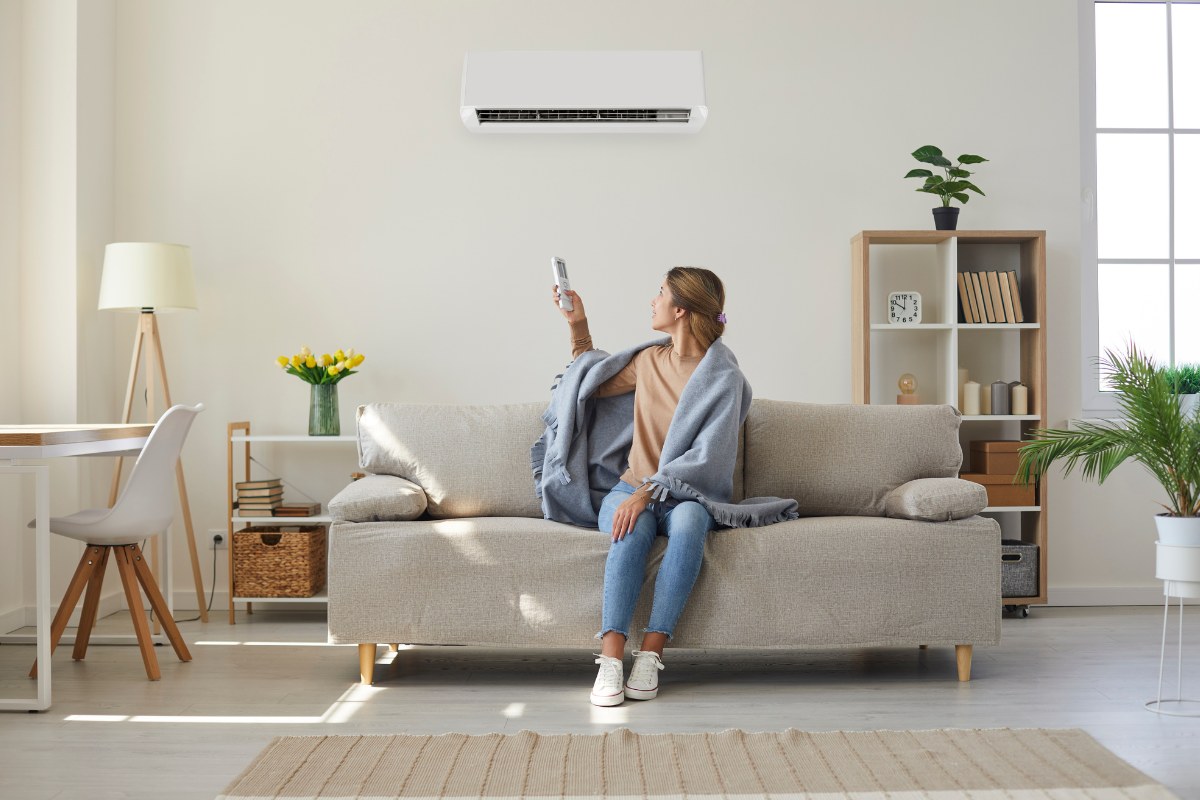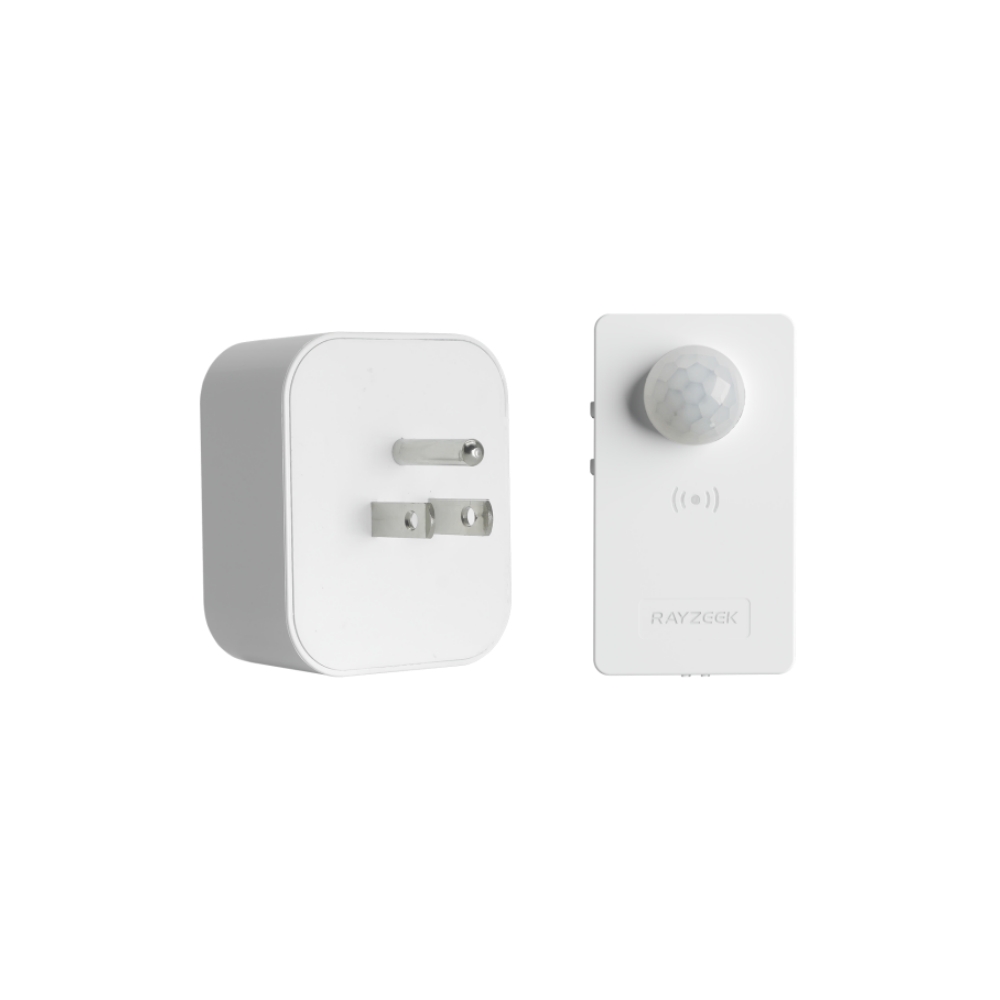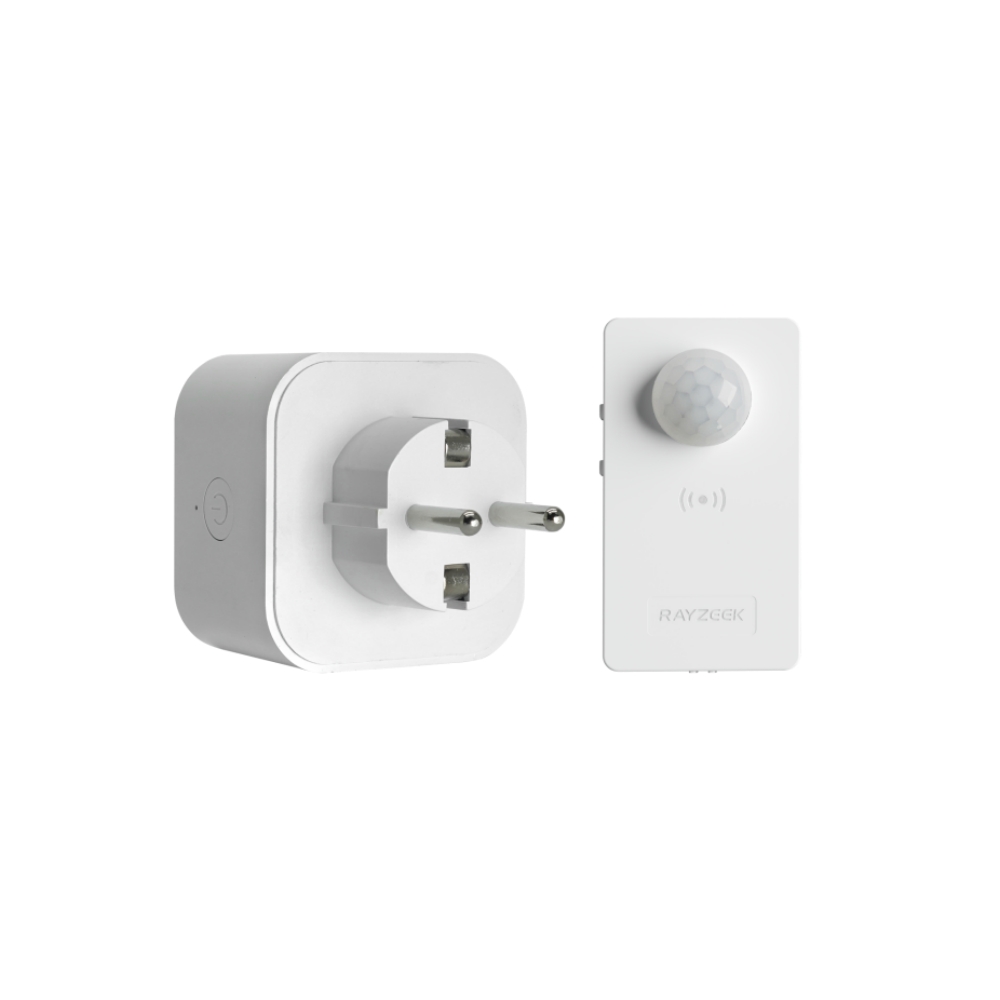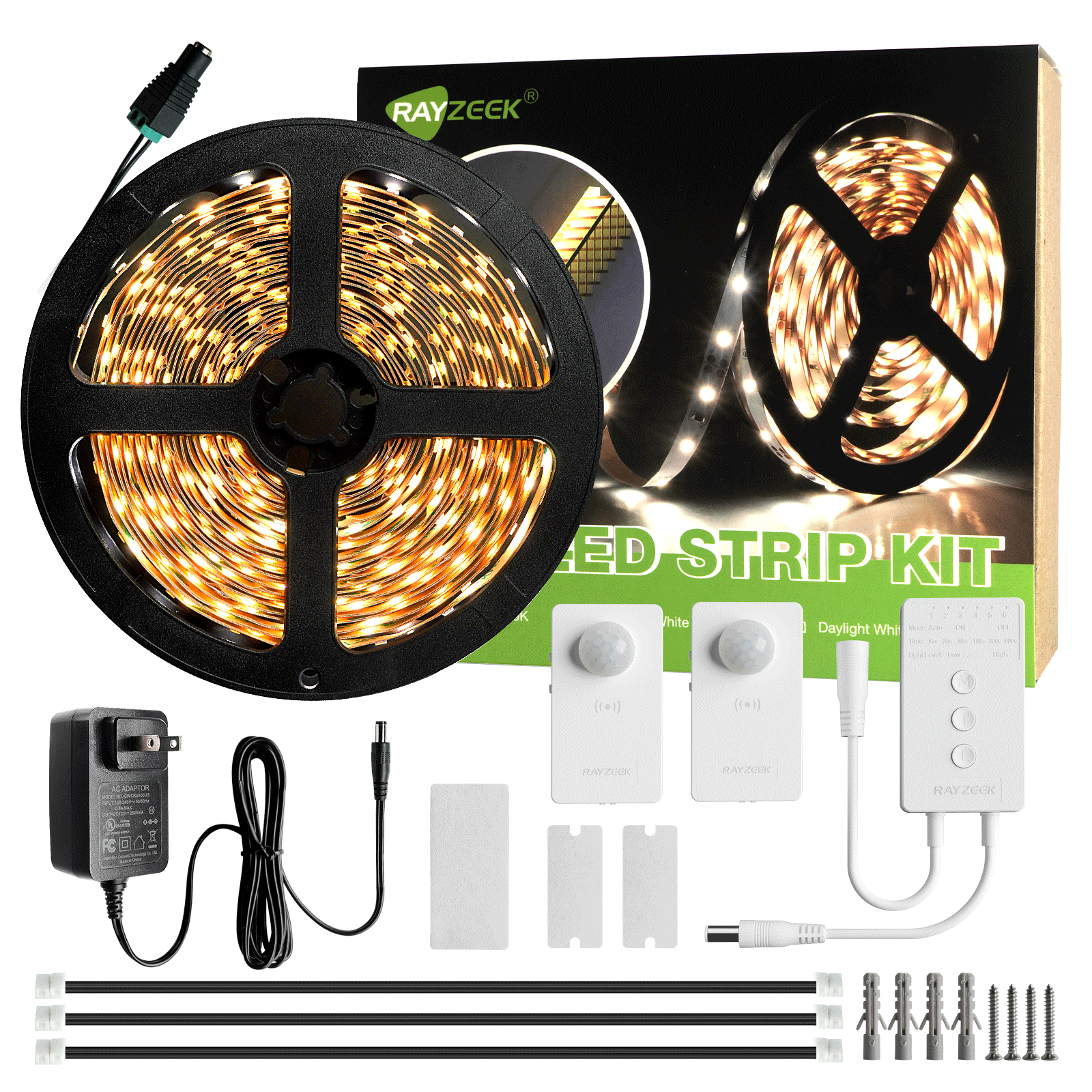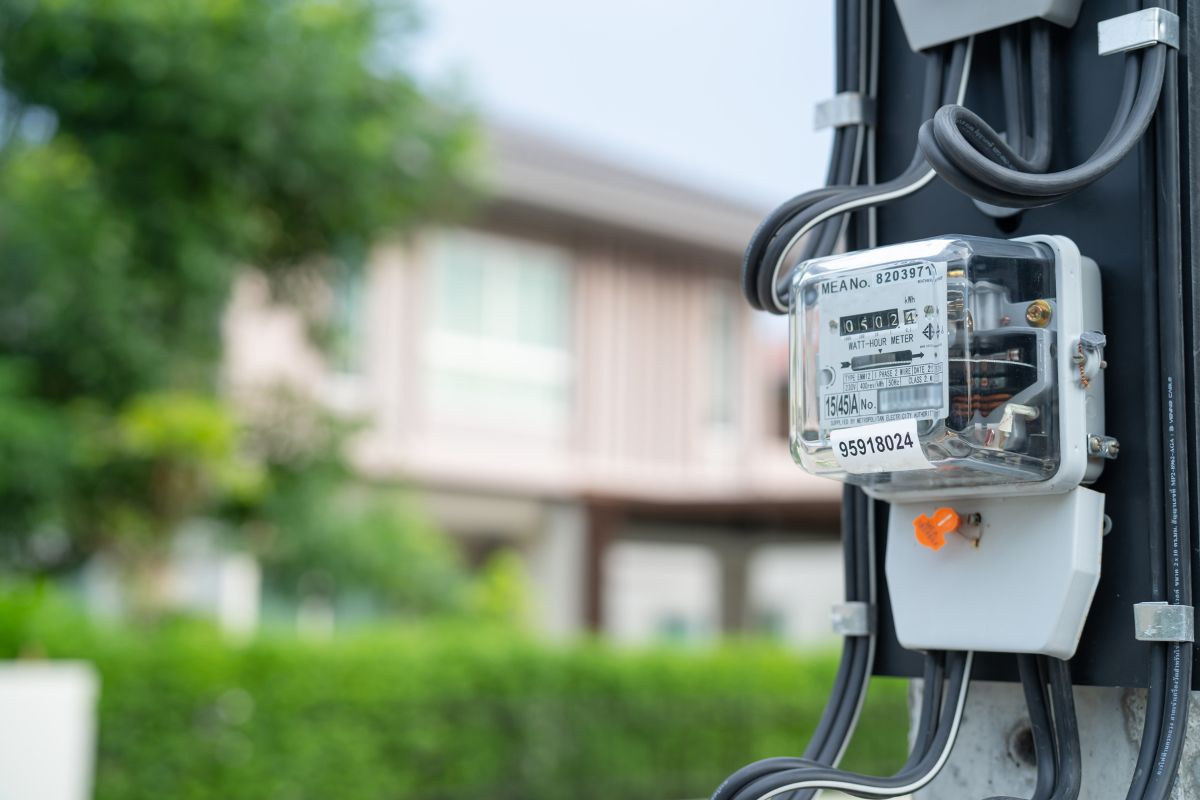에어컨의 쾌적함과 에너지 효율성 사이의 적절한 균형을 찾는 것이 공공요금과 환경에 미치는 영향을 줄이는 데 중요하지 않나요? 이 가이드에서는 이상적인 에어컨 온도 설정, 고급 온도 조절기 기술, 보완적인 에너지 절약 전략, 정기적인 유지 관리의 중요성에 대해 살펴봅니다. 이러한 접근 방식을 구현하면 쾌적한 생활 공간을 유지하면서 에너지 소비를 크게 줄일 수 있습니다.
에너지 절약을 극대화하기 위한 권장 AC 온도 설정
최적의 에너지 효율을 위해 에어컨을 설정하려면 쾌적함과 에너지 절약 사이의 적절한 균형을 찾아야 합니다. 이상적인 온도 설정은 실질적인 차이를 만들 수 있습니다.
최적의 주간 설정
광범위한 연구를 바탕으로 미국 에너지부는 집에 있을 때와 깨어 있을 때 78°F(25.5°C)를 권장합니다. 이 온도는 쾌적함을 크게 해치지 않으면서도 에너지 효율을 극대화할 수 있는 최적의 온도로 간주됩니다. 하지만 이는 일반적인 가이드라인이며 개인마다 선호도가 다를 수 있습니다.
왜 78°F인가? 이 온도는 에너지 사용을 최소화하면서 쾌적한 실내 환경을 유지합니다. 이 설정에서는 일반적으로 실내와 실외의 온도 차이가 작아 에어컨에 부담을 줄이면서도 눈에 띄는 냉방 효과를 제공합니다.
재택근무 설정
장기간 집을 비울 때는 온도 조절기를 조절하면 상당한 에너지 절약 효과를 얻을 수 있습니다. 미국 에너지부는 집을 비울 때는 화씨 7~10도(29.4°C)까지 온도를 높일 것을 권장합니다. 이렇게 설정하면 상당한 에너지를 절약할 수 있습니다. 집이 과열되지 않습니다.
다시 돌아왔을 때 집의 온도를 낮추려면 더 많은 에너지가 필요하지 않나요? 처음에는 에어컨이 더 열심히 작동하지만, 일반적으로 장시간 꺼져 있는 동안 절약되는 에너지가 이를 상쇄합니다. 출장 중 더 큰 비용 절감을 원한다면 다음과 같은 스마트 솔루션을 고려해 보세요. 레이직 RZ050 AC 모션 센서. 집이 비어 있을 때 AC 리모컨의 꺼짐 신호를 학습하여 자동으로 전원을 차단하므로 부재 중 에너지 낭비를 방지할 수 있습니다. 에너지 요금 폭탄에 대한 죄책감 없이 쾌적한 온도로 돌아갈 수 있습니다.
야간 추천
최적의 수면과 에너지 절약을 위해 야간 온도는 70~72°F(21~22°C) 사이가 적당합니다. 이 약간 서늘한 온도는 신체의 자연스러운 생체리듬과 일치하여 에너지 효율을 유지하면서 수면의 질을 개선할 수 있습니다.
온도 조정의 영향
작은 온도 조절로도 에너지 소비에 상당한 영향을 미칠 수 있습니다. 온도를 1도 올릴 때마다 1-3%의 에너지를 절약할 수 있습니다. 온도 조절기를 72°F에서 78°F로 올리면 최대 18%의 냉방 비용을 절약할 수 있습니다.
에너지 효율적인 설정에 적응하기 위한 전략
에너지 효율적인 설정으로 전환하는 데는 약간의 적응이 필요할 수 있지만 장기적인 이점은 상당합니다. 따라서 일반적인 설정 온도를 매주 1도씩 높여가며 점진적으로 접근하세요. 이렇게 하면 시간이 지남에 따라 몸이 적응할 수 있습니다. 선풍기를 전략적으로 사용하여 바람의 냉기 효과를 만들어 실내를 4°C 더 시원하게 느껴보세요. 옷과 침구를 더 가볍고 통기성이 좋은 것으로 바꾸는 것도 도움이 될 수 있습니다. 수분을 충분히 섭취하면 체온 조절에 도움이 됩니다. 마지막으로, 창문을 열어 자연 환기를 시켜 아침과 저녁 기온이 낮아지는 것을 활용하세요. 이러한 전략 외에도 다음과 같은 장치를 사용하여 AC 사용을 자동화하는 방법도 있습니다. Rayzeek RZ050 를 사용하면 절약 효과를 더욱 높일 수 있습니다. 이 모션 센서는 빈 방에서 에어컨이 작동하지 않도록 하여 에너지 효율을 극대화합니다. 시간 지연과 조도 센서를 조절할 수 있어 개인 맞춤형 제어가 가능하므로 효율을 떨어뜨리지 않으면서도 편안함을 보장합니다.
이러한 권장 온도 설정과 적응 전략을 실행하면 쾌적함을 유지하면서 에너지 소비를 크게 줄일 수 있습니다. 목표는 에너지 효율을 우선시하면서 가정에 가장 적합한 균형을 찾는 것입니다.
에너지 효율을 위한 프로그래밍 가능 및 스마트 온도 조절기 활용하기
프로그래밍 가능한 스마트 온도 조절기는 최적의 에너지 효율을 위한 강력한 도구입니다. 이러한 장치가 에너지 절약에 어떻게 기여하며, 그 효과는 무엇일까요?
프로그래밍 가능 온도 조절기 소개
프로그래밍 가능한 온도 조절기는 기존의 수동 온도 조절기에서 크게 업그레이드된 제품입니다. 일상에 따라 특정 온도 일정을 설정할 수 있어 지속적인 수동 조정 없이도 효율적으로 에어컨을 작동할 수 있습니다.
사용자 지정 온도 일정
시간대별, 요일별로 다양한 온도를 프로그래밍하세요. 예를 들어, 근무 시간에는 더 높은 온도를 설정하고 귀가 전에는 더 낮은 온도로 설정하세요.
여러 프로그래밍 기간
대부분 하루에 최소 4번의 프로그래밍 기간을 제공하여 정밀한 온도 제어가 가능합니다.
재정의 기능
계획이 변경되는 경우 전체 일정을 방해하지 않고 프로그램 설정을 쉽게 재정의할 수 있습니다.
에너지 사용량 보고서
일부 모델은 에너지 사용량 보고서를 제공하여 패턴과 절약 기회를 파악하는 데 도움을 줍니다.
스마트 온도 조절기의 고급 기능
스마트 온도조절기는 첨단 기술과 연결성을 통해 에너지 효율성을 획기적으로 향상시킵니다. 이러한 장치는 사용자의 행동을 학습하고 원격 액세스를 허용하며 다른 스마트 홈 시스템과 통합할 수 있습니다.
Wi-Fi 연결
집의 Wi-Fi에 연결하여 스마트폰 앱이나 웹 인터페이스를 사용하여 어디서나 HVAC 시스템을 제어하세요.
학습 기능
많은 제품이 사용자의 선호도와 루틴을 학습하여 최적의 편안함과 효율성을 위해 자동으로 온도를 조절합니다.
재실 감지
일부는 센서 또는 지오펜싱을 사용하여 사용자가 집에 있는지 또는 집을 비웠는지 감지하여 그에 따라 온도를 조정합니다.
스마트 홈 에코시스템과의 통합
음성 어시스턴트나 스마트 조명 시스템과 같은 다른 스마트 홈 장치와 통합하여 종합적인 가정 에너지 관리를 할 수 있습니다.
에너지 사용량 인사이트
고급 분석은 상세한 에너지 소비 인사이트를 제공하며, 종종 개선을 위한 제안도 함께 제공합니다.
에너지 절약 일정 설정
사용자 지정 일정을 만드는 것은 프로그래밍형 및 스마트 온도조절기의 강력한 기능입니다. 다음은 일반적인 가이드입니다:
평일 일정:
- 기상 시간: 기상 약 30분 전 78°F.
- 근무 시간: 집이 비어 있으면 85°F로 높입니다.
- 저녁: 집에 도착하기 약 30분 전에 78°F로 돌아갑니다.
- 수면: 취침 1시간 전 70-72°F.
주말 일정:
주말 루틴에 맞게 조정하세요.
이는 일반적인 가이드라인일 뿐입니다. 자신의 일상과 선호도에 맞게 일정을 조정하세요.
원격 액세스 및 제어 기능
원격 온도 조절기 제어는 에너지 효율의 판도를 바꿀 수 있습니다. 스마트 온도 조절기로:
- 이동 중에도 설정을 조정할 수 있습니다. 계획이 변경됩니다. 스마트 온도 조절기가 적응합니다.
- 어디서나 집의 온도와 에너지 사용량을 모니터링하세요.
- 비정상적인 온도 변화 또는 시스템 문제에 대한 알림을 받습니다.
- 지오펜싱을 사용하여 사용자의 위치에 따라 자동으로 온도를 조정하세요.
학습 기능 및 자동화
스마트 온도 조절기의 가장 인상적인 기능은 학습하고 적응하는 능력일 것입니다. 시간이 지남에 따라 이러한 장치는
- 선호하는 온도 설정 알아보기.
- 집의 난방 및 냉방 패턴을 파악하세요.
- 현지 날씨를 고려하여 설정을 최적화하세요.
- 에너지 절약 제안을 제공하세요.
잠재적 에너지 절약
정확한 절감액은 개별 사용량과 지역 에너지 비용에 따라 다르지만, 프로그래밍 가능한 온도조절기와 스마트 온도조절기 모두 에너지 소비를 크게 줄일 수 있습니다. EPA는 프로그래밍 가능한 온도 조절기를 사용하면 연간 약 $180의 에너지 비용을 절감할 수 있다고 추정합니다.
스마트 온도조절기는 더 큰 절감 효과를 제공할 수 있습니다. 일부 제조업체는 난방 및 냉방 비용을 최대 10~15%까지 절약할 수 있다고 주장합니다. 이러한 절감 효과는 이전 온도 설정과 습관, 지역 기후, HVAC 시스템의 효율성, 집의 크기와 단열 상태, 권장 온도 설정에 대한 적응 의지 등 다양한 요인에 따라 달라집니다.
AC 에너지 절감을 극대화하기 위한 보완 전략
온도 조절기 설정을 최적화하는 것은 에너지 효율을 위해 필수적이지만, 다양한 보완 전략을 통해 에어컨의 성능을 더욱 향상하고 에너지 소비를 줄일 수 있습니다. 이러한 방법을 살펴보세요.
관심 있는 분야
팬을 통한 냉각 효율 향상
선풍기는 에너지 효율을 추구하는 데 있어 강력한 지원군입니다. 선풍기는 어떻게 냉각에 기여하며 가장 좋은 사용 방법은 무엇일까요?
천장 팬
천장 선풍기는 냉기 효과를 만들어 실내를 최대 4°C까지 시원하게 만들어 줍니다. 여름에는 천장 선풍기가 시계 반대 방향으로 회전하여 공기를 아래쪽으로 밀어내도록 하세요.
휴대용 선풍기
전략적으로 배치한 휴대용 선풍기는 집안 전체에 시원한 공기를 순환시킵니다. 저녁이나 이른 아침에는 창문 맞은편에 선풍기를 배치하여 시원한 공기를 끌어들이는 것도 좋습니다.
집안 전체 팬
일반적으로 다락에 설치하는 이 강력한 선풍기는 열린 창문을 통해 시원한 공기를 빠르게 끌어들여 다락으로 더운 공기를 배출합니다. 특히 선선한 저녁에 효과적입니다.
선풍기는 공기 자체가 아니라 사람을 시원하게 해줍니다. 방을 나갈 때는 선풍기를 끄세요.
햇빛 및 열 증가 관리
햇빛은 집의 온도에 큰 영향을 미칩니다. 어떻게 하면 햇빛을 유리하게 관리할 수 있을까요?
창문 처리
하루 중 가장 더운 시간대에는 블라인드, 커튼 또는 차양막을 사용하여 햇빛을 차단하세요. 커튼의 밝은색 뒷면은 열을 외부로 반사할 수 있습니다.
반사 윈도우 필름
이 필름은 최대 70%의 태양열을 차단하는 동시에 자연광이 들어오는 것을 허용합니다.
외부 음영
차양, 태양열 스크린 또는 전략적으로 심은 나무는 그늘을 제공하고 열 증가를 줄일 수 있습니다.
스마트 글래스
햇빛의 강도에 따라 자동으로 색조가 변하는 스마트 유리 또는 전기 변색 창을 고려해 보세요.
자연 환기 활용
직관적이지 않은 것처럼 보일 수 있지만, 전략적으로 창문을 열면 실제로 에너지 효율을 개선할 수 있습니다.
교차 환기
집의 반대편에 있는 창문을 열어 자연스러운 공기 흐름을 만들어 보세요. 서늘한 계절에 가장 효과적입니다.
스택 효과
다층 주택에서는 가장 낮은 층과 가장 높은 층의 창문을 열어 굴뚝 효과를 만들어 시원한 공기를 끌어들이고 따뜻한 공기를 배출하세요.
야간 플러싱
서늘한 밤에는 창문을 열고, 아침에는 창문을 닫고 커튼을 쳐서 찬 공기를 가둬두세요.
내부 발열 최소화
많은 일상 활동으로 인해 집안에서 열이 발생하여 에어컨이 더 열심히 작동합니다. 이를 어떻게 줄일 수 있을까요?
어플라이언스 사용량
오븐, 건조기, 식기세척기 등 열을 발생시키는 가전제품은 하루 중 서늘한 시간대, 가급적 저녁에 사용하세요.
에너지 효율적인 조명
열 발생이 적은 LED 전구로 전환하세요.
전자 제품 관리
전자제품은 대기 모드에서도 열이 발생하므로 사용하지 않을 때는 전원을 끄고 플러그를 뽑아두세요.
대체 요리
가능하면 야외 그릴이나 전자레인지를 사용하세요.
주택 단열 및 밀폐 개선
단열과 밀폐가 잘 된 집은 에어컨의 작업 부하를 확실히 줄일 수 있습니다. 어떤 부분에 집중해야 할까요?
다락방 단열
다락방은 열이 아래로 방출되지 않도록 단열재를 적절히 설치하세요.
벽 단열
가능하면 특히 오래된 집의 경우 벽에 단열재를 추가하세요.
에어 씰링
창문, 문, 유틸리티 진입 지점 주변의 공기 누출을 막으세요. 작은 누출도 효율성에 큰 영향을 미칠 수 있습니다.
덕트 씰링
냉각된 공기가 빠져나가지 않도록 HVAC 덕트가 제대로 밀봉되어 있는지 확인하세요.
습도 제어 강화
습도는 우리가 온도를 인지하는 방식에 중요한 역할을 합니다. 습도 수준을 어떻게 관리할 수 있을까요?
제습기
습한 기후에서는 에어컨과 함께 제습기를 사용하면 쾌적함을 유지하면서 온도 조절기를 몇도 더 높게 설정할 수 있습니다.
욕실 및 주방 환기
습도가 높은 곳에서는 배기 팬을 사용하세요.
실내 식물
식물은 습도를 높여주기도 하지만 열을 흡수하기도 합니다. 전략적으로 배치하세요.
조경 전략 구현
집 주변 환경은 집의 온도에 큰 영향을 미칠 수 있습니다. 조경을 어떻게 유리하게 활용할 수 있을까요?
그늘 나무
여름철 그늘을 위해 집의 남쪽과 서쪽에 낙엽수를 심으세요.
녹색 지붕 또는 반사 지붕
이렇게 하면 지붕을 통한 열 흡수를 크게 줄일 수 있습니다.
바람막이
전략적으로 심은 나무나 관목은 바람막이를 만들 수 있습니다.
지상 덮개
집 근처의 열을 흡수하는 포장도로를 지피식물이나 밝은 색 자갈로 교체하세요.
최적의 에너지 효율을 위한 AC 시스템 유지 관리
물론 AC 효율을 극대화하려면 정기적인 유지보수가 중요합니다. 적절한 유지보수에는 어떤 것들이 포함되며, 에너지 절약에 어떻게 기여하나요?
정기적인 에어 필터 유지 관리
공기 필터는 에어컨의 효율을 높이는 데 필수적입니다. 얼마나 자주 교체해야 하며, 왜 그렇게 중요한가요?
레이직 모션 센서 포트폴리오에서 영감을 얻으세요.
원하는 것을 찾지 못하셨나요? 걱정하지 마세요. 문제를 해결할 수 있는 다른 방법은 항상 있습니다. 저희 포트폴리오 중 하나가 도움이 될 수 있습니다.
빈도
매월 에어 필터를 점검하고 1~3개월마다 또는 필요한 경우 더 자주 교체하세요.
효율성에 미치는 영향
깨끗한 필터는 더 나은 공기 흐름을 의미합니다. 에어컨에 더 적은 부담을 줍니다. 5-15% 에너지 절약.
DIY 유지보수
공기 필터 교체는 간단한 DIY 작업입니다. 올바른 크기와 유형을 사용해야 합니다.
전문적인 연간 유지보수
많은 유지보수 작업이 DIY로 이루어지지만, 매년 전문적인 점검은 필수입니다. 여기에는 일반적으로 무엇이 포함되나요?
종합 검사
기술자가 모든 시스템 구성 요소를 점검합니다.
냉매 점검
적절한 냉매 레벨은 효율성을 위해 매우 중요합니다. 수위가 낮으면 에너지 소비가 20% 이상 증가할 수 있습니다.
보정
기술자가 정확한 온도 조절기 보정을 보장합니다.
청소
전문적인 청소는 효율성을 크게 향상시킬 수 있습니다.
적절한 공기 흐름 보장
적절한 공기 흐름은 에어컨의 성능에 필수적입니다. 어떻게 유지 관리할 수 있을까요?
장애물 제거
통풍구와 레지스터가 막혀 있지 않은지 확인하세요.
실외기 여유 공간
실외기 주변을 깨끗하게 유지하세요.
덕트 검사
덕트의 막힘이나 누수 여부를 점검하세요.
중요 부품 청소
특정 에어컨 구성품은 정기적으로 청소해야 합니다. 무엇에 집중해야 하나요?
증발기 및 응축기 코일
매년 청소해야 합니다. 코일이 더러우면 효율이 최대 30%까지 떨어질 수 있습니다.
응축수 배수
매년 또는 필요에 따라 응축수 배수구를 청소하세요.
팬 블레이드
깨끗한 팬 블레이드는 적절한 공기 순환을 보장합니다.
냉매 레벨 관리
적절한 냉매 수준은 에어컨의 효율을 위해 매우 중요합니다. 무엇을 알아야 할까요?
전문가 확인
인증된 기술자만 냉매를 취급해야 합니다.
냉매 부족의 징후
에어컨이 계속 작동하지만 효과적으로 냉각되지 않거나 냉매 라인에 얼음이 있는 경우 누수가 있을 수 있습니다.
환경적 고려 사항
적절한 냉매 관리는 환경적으로 중요합니다.
덕트 검사 및 씰링
덕트 배관은 에너지 손실의 중요한 원인이 될 수 있습니다. 이 문제를 어떻게 해결할 수 있을까요?
전문 검사
덕트 점검을 받으세요.
씰링
덕트를 적절히 밀폐하면 효율을 20% 이상 향상시킬 수 있습니다.
절연
조건이 없는 공간의 단열 덕트는 효율성을 더욱 향상시킬 수 있습니다.
시스템 업그레이드 고려 중
시스템이 10~15년이 넘었다면 업그레이드를 고려하세요. 최신 모델은 종종 상당한 효율성 향상을 제공합니다.
나이
시스템이 10~15년 이상 된 경우 업그레이드를 고려하세요.
SEER 등급
SEER 등급이 높은 시스템을 찾으세요. 최소 등급은 13이지만 일부 고효율 모델의 등급은 20 이상입니다.
스마트 기능
스마트 온도 조절기와 호환되는 시스템을 고려하세요.
정기 유지보수의 장기적인 이점
장기적으로 어떤 이점이 있나요?
에너지 절약
정기적인 유지보수를 통해 냉각 비용을 15~20% 이상 절감할 수 있습니다.
수명 연장
잘 관리된 시스템은 15~20년 동안 사용할 수 있는 반면, 방치된 시스템은 10~12년 동안 사용할 수 있습니다.
공기 질 개선
정기적인 필터 교체와 청소로 공기질을 개선하세요.
동작 인식 에너지 절약 솔루션을 찾고 계신가요?
전체 PIR 모션 센서, 모션 인식 에너지 절약 제품, 모션 센서 스위치, 재실/공실 상업용 솔루션에 대해 문의하세요.
수리 비용 절감
작은 문제를 조기에 발견하면 나중에 비용이 많이 드는 고장을 예방할 수 있습니다.
일관된 편안함
잘 관리된 시스템은 더 일관된 냉각과 더 나은 습도 제어를 제공합니다.

